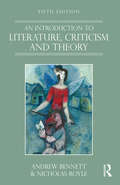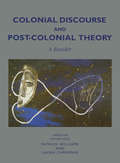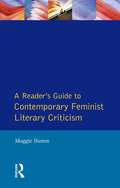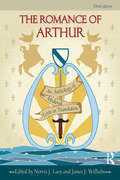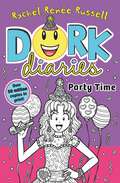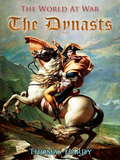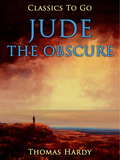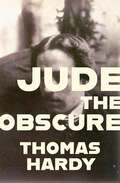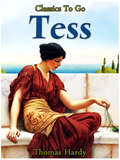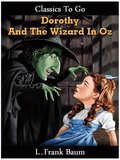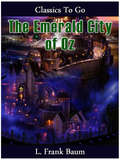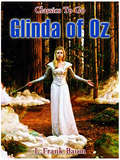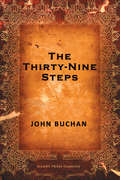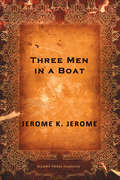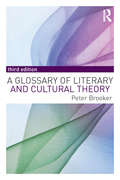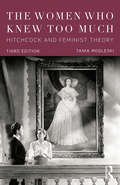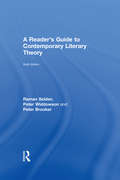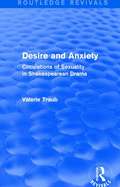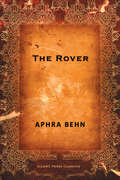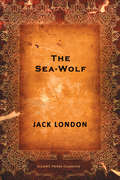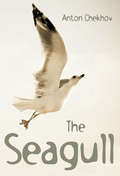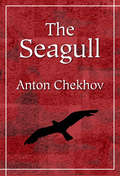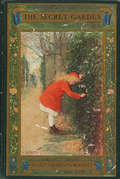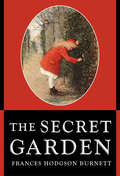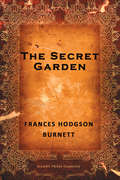- Table View
- List View
An Introduction to Literature, Criticism and Theory
by Andrew Bennett Nicholas RoyleLively, original and highly readable, An Introduction to Literature, Criticism and Theory is the essential guide to literary studies. Starting at ‘The Beginning’ and concluding with ‘The End’, chapters range from the familiar, such as ‘Character’, ‘Narrative’ and ‘The Author’, to the more unusual, such as ‘Secrets’, ‘Pleasure’ and ‘Ghosts’. Now in its fifth edition, Bennett and Royle’s classic textbook successfully illuminates complex ideas by engaging directly with literary works, so that a reading of Jane Eyre opens up ways of thinking about racial difference, for example, while Chaucer, Raymond Chandler and Monty Python are all invoked in a discussion of literature and laughter. The fifth edition has been revised throughout and includes four new chapters – ‘Feelings’, ‘Wounds’, ‘Body’ and ‘Love’ – to incorporate exciting recent developments in literary studies. In addition to further reading sections at the end of each chapter, the book contains a comprehensive bibliography and a glossary of key literary terms. A breath of fresh air in a field that can often seem dry and dauntingly theoretical, this book will open the reader’s eyes to the exhilarating possibilities of reading and studying literature.
Colonial Discourse and Post-Colonial Theory: A Reader
by Patrick Williams Laura ChrismanThis popular text provides an in-depth introduction to debates within post-colonial theory and criticism. The readings are drawn from a diverse selection of thinkers both historical and contemporary.
A Readers Guide to Contemporary Feminist Literary Criticism
by Maggie HummThis introduction to feminist literary criticism in its international contexts discusses a broad range of complex critical writings and then identifies and explains the main developments and debates within each approach. Each chapter has an easy-to-use format, comprising an introductory overview, an explanation of key themes and techniques, a detailed account of the work of specific critics, and a summary which includes critiques of the approach. Each chapter is accompanied by a guide to the primary texts and further reading.
The Romance of Arthur: An Anthology of Medieval Texts in Translation
by Norris J. Lacy James J. WilhelmThe Romance of Arthur, James J. Wilhelm’s classic anthology of Arthurian literature, is an essential text for students of the medieval Romance tradition. This fully updated third edition presents a comprehensive reader, mapping the course of Arthurian literature, and is expanded to cover: key authors such as Chrétien de Troyes and Thomas of Britain, as well as Arthurian texts by women and more obscure sources for Arthurian romance extensive coverage of key themes and characters in the tradition a wide geographical range of texts including translations from Latin, French, German, Spanish, Welsh, Middle English, and Italian sources a broad chronological range of texts, encompassing nearly a thousand years of Arthurian romance. Norris J. Lacy builds on the book’s source material, presenting readers with a clear introduction to many accessible modern-spelling versions of Arthurian texts. The extracts are presented in a new reader-friendly format with detailed suggestions for further reading and illustrations of key places, figures, and scenes. The Romance of Arthur provides an excellent introduction and an extensive resource for both students and scholars of Arthurian literature.
Dork Diaries: Party Time
by Rachel Renée RussellNikki is finally starting to adjust to life at her new school and things are looking up. She's made some real friends and her major crush, Brandon, even asks her to be his lab partner in science, Hello! Seriously awesome development! But when Nikki overhears mean girl Mackenzie bragging that Brandon's going to take her to the Halloween dance, a bummed Nikki agrees to spend Halloween at a kids' party for her little sister Brianna. It's only aftershe makes the commitment that she finds out Mackenzie was lying and that her dream of going to the party with Brandon could be a reality. Now she's got two parties to juggle, what's a girl to do? The second book in the bestselling Dork Diaries series by Rachel Ren#65533;e Russell, author of The Misadventures of Max Crumbly (publishing June 2016). Praise for DORK DIARIES: 'Dork Diaries is so laugh-out-loud funny and original I stayed up late reading it, just to see what would happen next - and to get that next laugh!' Kate Brian, author of the Private series 'Filled with fun illustrations, and fonts that keep you looking, Rachel Renee Russell has created for girls what Jeff Kinney did for boys with his Wimpy Kids series. ' Amazon. com five star review 'spot on for the tween market' The Bookseller 'The Dork Diaries series is fast becoming my favourite for younger readers, and I really hope there are more dorky stories living in Rachel Renee Russell's head. I'm sure Nikki has many more embarrassing moments just waiting to happen, as well as lots of gossip to share about her crush on Brandon. More please!' Wondrous Reads Blog
The Dynasts
by Thomas Hardy"The Dynasts" is an English-language drama in verse by Thomas Hardy. Hardy himself described this work as "an epic-drama of the war with Napoleon, in three parts, nineteen acts and one hundred and thirty scenes". Not counting the Forescene and the Afterscene, the exact total number of scenes is 131. The three parts were published in 1904, 1906 and 1908. Because of the ambition and scale of the work, Hardy acknowledged that The Dynasts was not a work that could be conventionally staged in the theatre, and described the work as "the longest English drama in existence". Scholars have noted that Hardy remembered war stories of the veterans of the Napoleonic wars in his youth, and used them as partial inspiration for writing The Dynasts many years later in his own old age. In addition, Hardy was a distant relative of Captain Thomas Hardy, who had served with Admiral Horatio Nelson at Trafalgar. Hardy consulted a number of histories and also visited Waterloo, Belgium, as part of his research. George Orwell wrote that Hardy had "set free his genius" by writing this drama and thought its main appeal was "in the grandiose and rather evil vision of armies marching and counter-marching through the mists, and men dying by hundreds of thousands in the Russian snows, and all for absolutely nothing."
Jude the Obscure
by Thomas HardyPowerful and controversial from its 1895 publication to the present, Jude the Obscure scandalized Victorian critics, who condemned it as decadent, indecent, and degenerate. Between its frank portrayals of sexuality and its indictments of marriage, religion, and England's class system, the novel offended a broad swath of readers. Its heated reception led the embittered author to renounce fiction, turning his considerable talents ever afterward to writing poetry.Hardy's last novel depicts a changing world, where a poor stonemason can aspire to a university education and a higher place in society--but where in reality such dreams remain unattainable. Thwarted at every turn, Jude Hawley abandons his hopes, is trapped into an unwise marriage, and pursues a doomed relationship with his free-spirited cousin, Sue Bridehead. The lovers find themselves equally incapable of living within the conventions of their era and of transcending its legal and moral strictures. Hailed by modern critics as a pioneering work of feminism and socialist thought, Hardy's tragic parable continues to resonate with readers.
Jude the Obscure
by Thomas HardyPowerful and controversial from its 1895 publication to the present, Jude the Obscure scandalized Victorian critics, who condemned it as decadent, indecent, and degenerate. Between its frank portrayals of sexuality and its indictments of marriage, religion, and England's class system, the novel offended a broad swath of readers. Its heated reception led the embittered author to renounce fiction, turning his considerable talents ever afterward to writing poetry.Hardy's last novel depicts a changing world, where a poor stonemason can aspire to a university education and a higher place in society--but where in reality such dreams remain unattainable. Thwarted at every turn, Jude Hawley abandons his hopes, is trapped into an unwise marriage, and pursues a doomed relationship with his free-spirited cousin, Sue Bridehead. The lovers find themselves equally incapable of living within the conventions of their era and of transcending its legal and moral strictures. Hailed by modern critics as a pioneering work of feminism and socialist thought, Hardy's tragic parable continues to resonate with readers.
Tess, a Pure Woman
by Thomas HardyTess: A Pure Woman is a novel by Thomas Hardy. It initially appeared in a censored and serialised version, published by the British illustrated newspaper The Graphic in 1891 and in book form in 1892. Like much of Hardy's work, the novel focuses partly on the declining rural society of the Victorian era, and also addresses class issues, as Tess' father's aspiration to transcend his class sets in motion a disastrous series of events. Though now considered a major nineteenth-century English novel and possibly Hardy's fictional masterpiece, Tess received mixed reviews when it first appeared, in part because it challenged the sexual morals of late Victorian England.
Dorothy and the Wizard in Oz (Classics To Go #4)
by L. Frank BaumIn the story, Dorothy is joining her Uncle Harry in California at Hugson's Ranch, on their way home from Australia, Dorothy having visited friends in San Francisco. <P><P>She strikes up an acquaintance with Hugson's nephew and her second cousin Zeb. Dorothy, Eureka (Dorothy's cat) and Zeb are riding a buggy being pulled by a horse named Jim when an earthquake starts and opens a crevice beneath them that sends them hurtling into the bowels of the earth. Dorothy, Eureka, Jim, Zeb, and the buggy alight in the land of the Mangaboos, a vegetable people who accuse them of causing the Rain of Stones (what the Mangaboos call the earthquake because they are beneath the surface of the earth, and earth instead falls on them). <P>Zeb is surprised by this strange new land, but Dorothy surmises that they are in a fairy country because they are meeting vegetable people and Jim and Eureka are now speaking. Just as they are about to be sentenced to death by the Mangaboos, a hot air balloon falls out of the sky, and in the basket is the Wizard Of Oz.
The Emerald City of Oz (The Land of Oz #6)
by L. Frank BaumDorothy speaks freely of her adventures to her only living relatives, her Aunt Em and Uncle Henry. Neither of them believes a word of her stories, but consider her a dreamer. <P><P>Later, it is revealed that the destruction of their farmhouse by the tornado back in "The Wonderful Wizard Of Oz" has left Uncle Henry in terrible debt. In order to pay it, he has taken out a mortgage on his farm. If he cannot repay his creditors, they will seize the farm. He is not afraid for himself, but both he and his wife, Aunt Em, fear very much for their niece's future. Dorothy arranges with Princess Ozma to take them to the Land of Oz, where they will be safe. Using the magic belt (a tool captured from the jealous Nome King Roquat), Ozma transports them to her throne room. They are given rooms to live in and luxuries to enjoy, including a vast and complex wardrobe. They meet with many of Dorothy's animal friends, including the Cowardly Lion and Billina, the Yellow Hen.
Glinda of Oz (The Land of Oz #14)
by L. Frank BaumPrincess Ozma and Dorothy travel to an obscure corner of the Land of Oz, in order to prevent a war between two local powers, the Skeezers and the Flatheads. <P><P>The leaders of the two tribes prove obstinate. Unable to prevent the war, Dorothy and Ozma find themselves imprisoned on the Skeezers' glass-covered island, which has been magically submerged to the bottom of its lake. Their situation worsens when the warlike queen Coo-ee-oh, who is holding them captive and who alone knows how to raise the island back to the surface of the lake, loses her battle and gets transformed into a swan, forgetting all her magic in the process. Ozma and Dorothy summon Glinda, who, with help from several magicians and magical assistants, must find a way to raise the island and liberate its trapped inhabitants.
The Thirty-Nine Steps
by John BuchanJohn Buchan's The Thirty-Nine Steps was the novel that introduced readers to the cunning Richard Hannay and became a foundational work in the spy-thriller genre. Taking place only months before the outbreak of World War One (and written during the conflict) it focuses on Hannay's attempts to warn the government of an unfolding plot to steal Great Britain's military plans. Throughout the book Hannay must escape from German spies and the British police, who falsely believe that he has murdered the very man who revealed the plot to him. The book would prove incredibly popular upon its release and has been cited as the first "man-on-the-run" style story which has been re-used in films and in literature ever since.
Three Men in a Boat, to say nothing of the dog
by Jerome K. JeromeAgreeing that they suffer from the serious illness of "overwork," J., George, and Harris embark on a boating holiday along the River Thames. Travelling from Kingston to Oxford, the three men prove themselves wholly unprepared for the journey, and document their misadventures with comedic brilliance.
A Glossary of Literary and Cultural Theory
by Peter BrookerThe Glossary of Literary and Cultural Theory provides researchers and students with an up-to-date guide through the vibrant and changing debates in Literary and Cultural Studies. In a field where meanings are frequently complex and ambiguous, this text is remarkable for its clarity and usefulness. This third edition includes 17 entirely new entries and updates to more than a dozen others which address key concepts and contemporary positions in both literary and cultural theory. New entries include: • Actor Network Theory • Anthropocene • Ecocriticism • Digital Humanities • Postcapitalism • World Literature
The Women Who Knew Too Much: Hitchcock and Feminist Theory
by Tania ModleskiOriginally published in 1988, The Women Who Knew Too Much remains a classic work in film theory and feminist criticism. The book consists of a theoretical introduction and analyses of seven important films by Alfred Hitchcock, each of which provides a basis for an analysis of the female spectator as well as of the male spectator. Modleski considers the emotional and psychic investments of men and women in female characters whose stories often undermine the mastery of the cinematic "master of suspense." The third edition features an interview with the author by David Greven, in which he and Modleski reflect on how feminist and queer approaches to Hitchcock studies may be brought into dialogue. A teaching guide and discussion questions by Ned Schantz help instructors and students to delve into this seminal work of feminist film theory.
A Reader's Guide to Contemporary Literary Theory
by Raman Selden Peter Widdowson Peter BrookerA Reader’s Guide to Contemporary Literary Theory is a classic introduction to the complex yet crucial area of literary theory. This book is known for its clear, accessible style and its thorough, logical approach, guiding the reader through the essentials of literary theory. It includes two new chapters: ‘New Materialisms’ which incorporates ecocriticism, animal studies, posthumanism and thing theory; ‘21st Century and Future Developments’ which includes technology, digital humanities, ethics and affect.
Desire And Anxiety (routledge Revivals): Circulations Of Sexuality In Shakespearean Drama
by Valerie TraubIn both feminist theory and Shakespearean criticism, questions of sexuality have consistently been conflated with questions of gender. First published in 1992, this book details the intersections and contradictions between sexuality and gender in the early modern period. Valerie Traub argues that desire and anxiety together constitute the erotic in Shakespearean drama #65533; circulating throughout the dramatic texts, traversing #65533;masculine#65533; and #65533;feminine#65533; sites, eliciting and expressing heterosexual and homoerotic fantasies, embodiments, and fears. This is the first book to present a non-normalizing account of the unconscious and the institutional prerogatives that comprise the erotics of Shakespearean drama. Employing feminist, psychoanalytic, and new historical methods, and using each to interrogate the other, the book synthesises the psychic and the social, the individual and the institutional.
The Rover or, The Banished Cavaliers
by Aphra BehnThe Rover or The Banish'd Cavaliers (1677) is a play in two parts that is written by the English female author Aphra Behn. It is a revision of Thomas Killigrew's play Thomaso, or The Wanderer (1664), and depicts the amorous adventures of a group of Englishmen in Naples at Carnival time. According to Restoration poet John Dryden, it "lacks the manly vitality of Killigrew's play, but shows greater refinement of expression." The play stood for three centuries as "Behn's most popular and most respected play." The Rover features multiple plot lines, dealing with the amorous adventures of a group of Englishmen in Naples at Carnival time.
The Sea-Wolf
by Jack LondonThe Sea-Wolf is a 1904 psychological adventure novel by American novelist Jack London. The book's protagonist, Humphrey van Weyden, is a literary critic who is a survivor of an ocean collision and who comes under the dominance of Wolf Larsen, the powerful and amoral sea captain who rescues him. London's intention in writing The Sea-Wolf was "an attack on (Nietzsche's) super-man philosophy."[8] Nietzsche and Schopenhauer are mentioned in the second sentence of the novel as the preferred reading of the friend Humphrey van Weyden visited before his shipwreck. The novel also contains references to Herbert Spencer in chapters 8, 10, Charles Darwin in chapters 5, 6, 10, 13, Omar Khayyám in chapters 11, 17, 26, Shakespeare in chapter 5, and John Milton in chapter 26. Like The Call of the Wild, The Sea Wolf tells the story of a soft, domesticated protagonist — in this novel's case an intellectual man named Humphrey van Weyden — forced to become tough and self-reliant by exposure to cruelty and brutality. The plot has some initial similarities to Captains Courageous by Rudyard Kipling in that they each have an idle, rich young man rescued from the sea and shanghaied into becoming a working sailor; however, the two stories differ widely in plot and moral tone.
The Seagull
by Anton ChekhovAnton Chekhov's The Seagull was written in 1895 and first staged in 1896. It dramatises the romantic and artistic conflicts between four characters: the famous middlebrow story writer Boris Trigorin, the ingenue Nina, the fading actress Irina Arkadina, and her son the symbolist playwright Konstantin Tréplev. Though the character of Trigorin is considered Chekhov's greatest male role like Chekhov's other full-length plays, The Seagull relies upon an ensemble cast of diverse, fully developed characters. In contrast to the melodrama of mainstream 19th-century theatre, lurid actions (such as Konstantin's suicide attempts) are not shown onstage. Characters tend to speak in ways that skirt around issues rather than addressing them directly; in other words, their lines are full of what is known in dramatic practice as subtext. A play more character driven than plot driven, it remains a staple for theatrical production companies to this day.
The Seagull
by Anton ChekhovAnton Chekhov's The Seagull was written in 1895 and first staged in 1896. It dramatises the romantic and artistic conflicts between four characters: the famous middlebrow story writer Boris Trigorin, the ingenue Nina, the fading actress Irina Arkadina, and her son the symbolist playwright Konstantin Tréplev. Though the character of Trigorin is considered Chekhov's greatest male role like Chekhov's other full-length plays, The Seagull relies upon an ensemble cast of diverse, fully developed characters. In contrast to the melodrama of mainstream 19th-century theatre, lurid actions (such as Konstantin's suicide attempts) are not shown onstage. Characters tend to speak in ways that skirt around issues rather than addressing them directly; in other words, their lines are full of what is known in dramatic practice as subtext. A play more character driven than plot driven, it remains a staple for theatrical production companies to this day.
The Secret Garden
by Frances Hodgson BurnettOne of the most beloved children’s stories of all time “The Secret Garden” is arguably Francis Hodgson Burnett’s most famous novel. First serialized in the fall of 1910 and in book form in 1911, “The Secret Garden” is the story of Mary Lennox, a sick young girl living in India with her parents. Mary rarely sees her parents though, as her sick and unsightly condition is too much for them to bother with. She is placed in the constant care of Indian servants until an outbreak of cholera kills everyone in the Lennox household except for Mary. Mary returns to Yorkshire to live with her uncle, Archibald Craven. It is here that Mary learns of a secret garden that belonged to the late wife of her uncle. Mary is instantly intrigued and sets out to find this secret garden and what is contained within. This classic story is one which explores the healing power inherent in all living things, in this case that which grows in the garden. For its inspirational outlook in the face of tragic circumstances “The Secret Garden” is a work that has come to be cherished by generations of young readers ever since its first publication.
The Secret Garden
by Frances Hodgson BurnettOne of the most beloved children’s stories of all time “The Secret Garden” is arguably Francis Hodgson Burnett’s most famous novel. First serialized in the fall of 1910 and in book form in 1911, “The Secret Garden” is the story of Mary Lennox, a sick young girl living in India with her parents. Mary rarely sees her parents though, as her sick and unsightly condition is too much for them to bother with. She is placed in the constant care of Indian servants until an outbreak of cholera kills everyone in the Lennox household except for Mary. Mary returns to Yorkshire to live with her uncle, Archibald Craven. It is here that Mary learns of a secret garden that belonged to the late wife of her uncle. Mary is instantly intrigued and sets out to find this secret garden and what is contained within. This classic story is one which explores the healing power inherent in all living things, in this case that which grows in the garden. For its inspirational outlook in the face of tragic circumstances “The Secret Garden” is a work that has come to be cherished by generations of young readers ever since its first publication.
The Secret Garden
by Frances Hodgson BurnettOne of the most popular children's books ever written, The Secret Garden is the story of the orphaned Mary Lennox whose life is changed when she discovers a secret on her uncle's estate. Forced to live with her uncle after the death of her parents Mary is initially rude and selfish until she stumbles upon the walled off garden once maintained by her dead aunt. While attempting to return the garden to it's former glory – and with the help of her young friend Dickon and the gardener Ben – Mary finds her own attitude softening. Her new refuge turns out not only to be her salvation but offers hope to her mourning uncle and her disabled cousin Colin. A touching story, Burnett's book is still enjoyed by children and adults a century after its initial publication.
